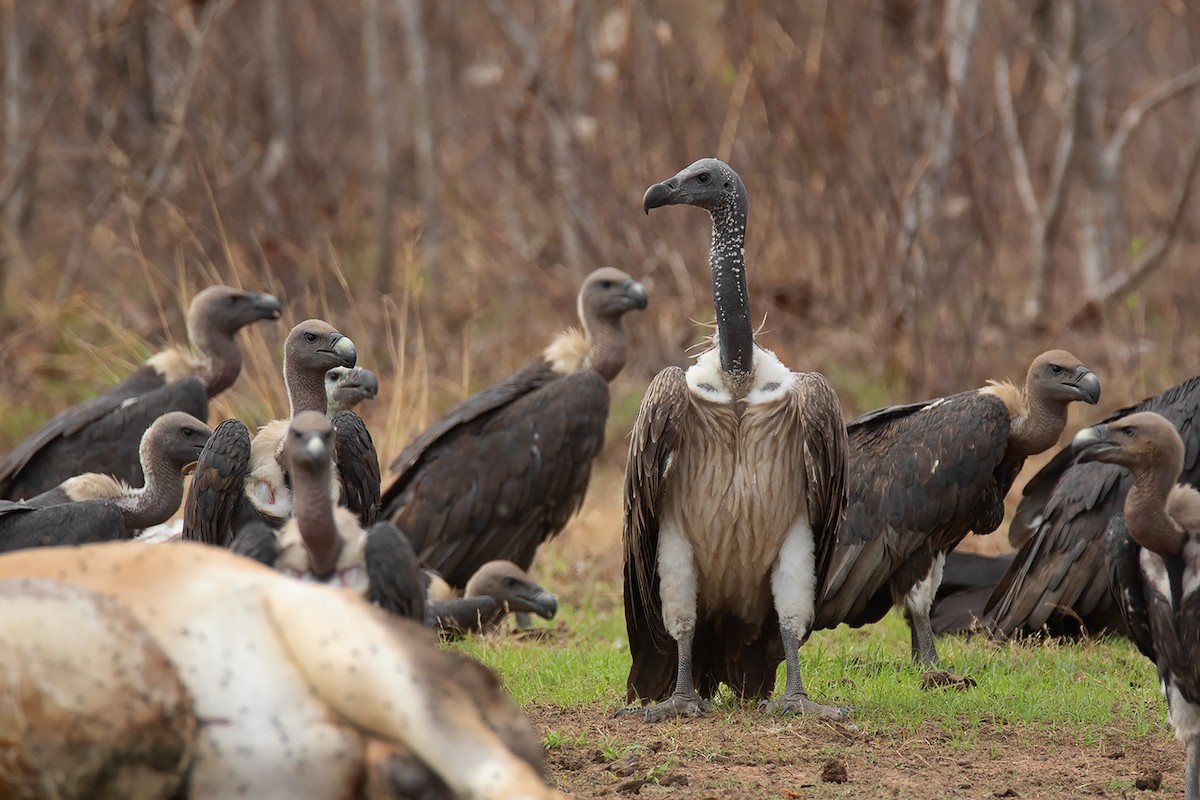Slender-billed Vulture
A species of Griffon Vultures and Allies Scientific name : Gyps tenuirostris Genus : Griffon Vultures and Allies
Slender-billed Vulture, A species of Griffon Vultures and Allies
Botanical name: Gyps tenuirostris
Genus: Griffon Vultures and Allies
Content
Description General Info
 Photo By Ayuwat Jearwattanakanok
Photo By Ayuwat Jearwattanakanok Description
At 80 to 95 cm (31 to 37 in), in length, this mid-sized vulture is about the same size as its sister species, the Indian vulture. This vulture is mostly grey with a pale rump and grey undertail coverts. The thighs have whitish down. The neck is long, bare, skinny and black. The black head is angular and narrow with the dark bill appearing narrow midway. The ear opening is prominent and exposed. 
Size
1.03 m
Nest Placement
Cliff
Feeding Habits
Slender-billed Vulture primarily feeds on carrion, including dead livestock and wild ungulates, sometimes consuming human remains. It scavenges at dumps and may feed in groups with other scavengers. It exhibits a scavenging diet specialized in large vertebrate carcasses.
Habitat
The slender-billed Vulture typically inhabits open and partially wooded areas across lowland and foothill regions. Favoring environments near human settlements, they are often observed around villages and slaughterhouses where food sources are readily available. These birds are known to frequent supplemental feeding sites known as 'vulture restaurants.' Their nesting preferences are arboreal, favoring trees as opposed to the cliff-nesting habits of some related species.
Dite type
Scavenger
General Info
Feeding Habits
Bird food type
Distribution Area
The slender-billed vulture is found in India from the Gangetic plain north, west to Himachal Pradesh, south potentially as far as northern Odisha, and east through Assam. It is also found in north and central Bangladesh, southern Nepal, Burma and Cambodia. 
Species Status
This species has suffered a marked decline in its numbers in recent years. The population of this species and the Indian vulture declined by 97% overall and in India annual decline rates for both species averaged over 16% between 2000–2007. Wild populations remain from northern and eastern India through southern Nepal and Bangladesh, with a small population in Burma. The only breeding colony in Southeast Asia is in the Steung Treng province of Cambodia. This colony is thought to number about 50–100 birds. The survival of the vultures in Cambodia may have been partly because diclofenac, which is poisonous to vultures, is not available there. The Royal Society for the Protection of Birds (RSPB) has placed the approximate number of slender-billed vultures living beyond confines at about 1,000 in 2009 and predictions estimate total extinction within the next decade amongst the wild population. The slender-billed vulture is a protected species listed on the appendix II list of CITES, because its numbers have declined rapidly. Its decline is largely due to the use of the non-steroidal anti-inflammatory drug (NSAID) diclofenac in working farm animals. Diclofenac is poisonous to vultures, causing kidney failure, and is being replaced by meloxicam (another NSAID), which is not toxic to vultures. The retail sale of Diclofenac is banned by law in India; however, Diclofenac is still acquired illegally and applied to livestock. Captive-breeding programs in India are aiming to conserve the species, and it is hoped that vultures can be released back in the wild when the environment is free of diclofenac. Joint efforts between the RSPB and the Zoological Society of London resulted in the first successful captive breeding in 2009. Two slender-billed vultures hatched and are being independently cared for in Haryana and West Bengal. 

 Photo By Ayuwat Jearwattanakanok
Photo By Ayuwat Jearwattanakanok